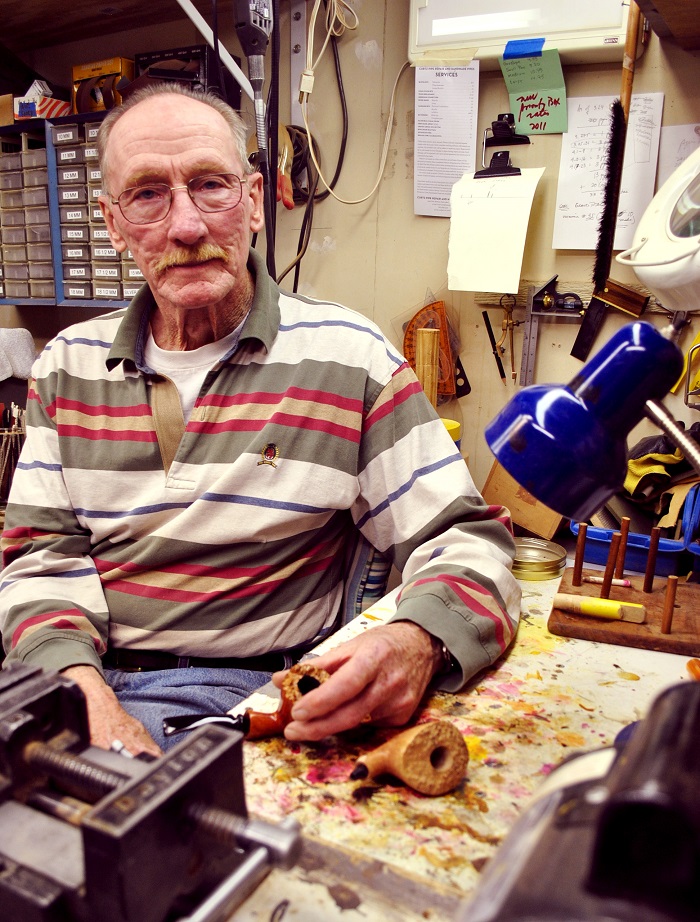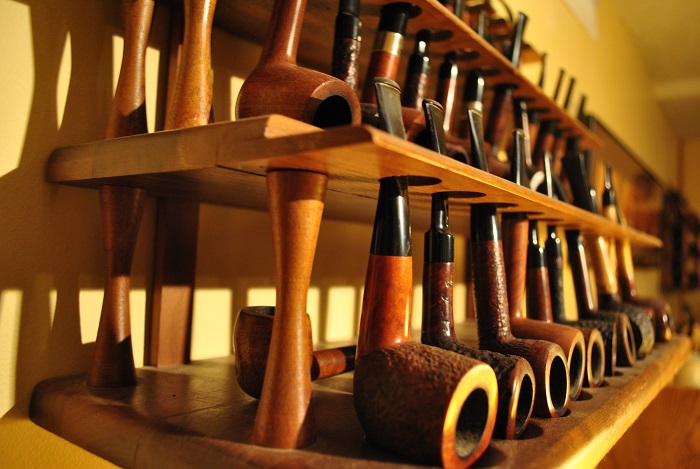 For Arley Curtz, a pipe is more than just a way to smoke tobacco. It summons up a time when pipe smoking was both acceptable and part of a gentler civility in our culture.
For Arley Curtz, a pipe is more than just a way to smoke tobacco. It summons up a time when pipe smoking was both acceptable and part of a gentler civility in our culture.
Curtz is a pipe maker and collector of smoking pipes. He has over 300, ranging from simple corn cobs to handmade antiques. Each one has a story. As the smoke from a pipe curls upwards, it allows Curtz a time to pause and reflect. “A pipe,” he says, “is a keeper of memories.”
Just as a pipe cannot be smoked in haste, a handmade pipe requires patience to craft. Curtz forms his pipes from briarwood, which grows in countries bordering the Mediterranean Sea.
Although other materials such as mesquite and the chalk-like meerschaum can be used, Curtis prefers briarwood because of the slow, even burn it provides.
He first examines a rough block, which can range from $40 to $200 in price, for possible flaws. Then, over a period of 15 to 20 hours, he drills, shapes and burnishes the pipe until it becomes a minor work of art.
But the pipe is only half of the equation. There are hundreds of potential tobacco mixtures to smoke, and rare ones fetch up to $200 per ounce on the internet.
Curtz suggests that a beginning pipe smoker visit a tobacco shop and prepare to spend between $75 and $125 for a quality pipe that can wick away heat and moisture. Once a person has a pipe, its packing, lighting and cleaning become a ritual to be enjoyed as much as the smoking itself.
Curtz acknowledges the health risks but notes that pipe smoking can be a gentleman’s approach to tobacco. “I can’t explain it,” he says, “but there are rare moments when the smoke is so perfect it puts one in a state of grace.”
Arley Curtz currently does mostly repairs and commissioned orders.


